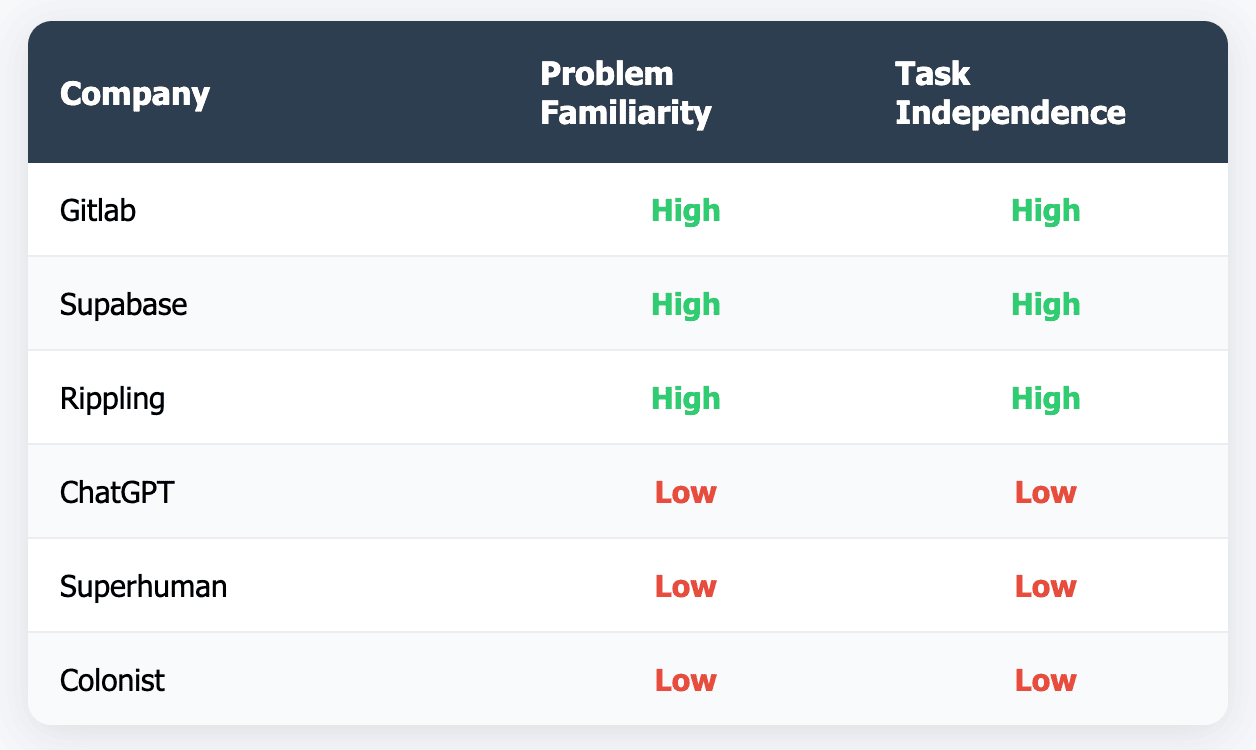Why Some Companies Thrive Remotely (And Others Fail)
Your company is most likely losing millions of dollars due to remote work.
Let’s dive into the first principles of remote work to understand why.
The Three Types of Work
- Alone Execution Time: Independent work without interruptions (e.g., coding, sales outreach).
- Collaborative Time: Hard problems require collaboration (e.g., strategy, design).
- Bullshit Time: Casual chats uncover hidden problems (e.g., lunch talks, hallway conversations).

How Remote Work Shifts the Balance
- Alone Execution Time: Remote shines here — fewer distractions, more control.
- Collaborative Time: It’s harder remotely; scheduling replaces spontaneity.
- Bullshit Time: Nearly gone remotely, risking missed problems.
Remote collaboration is like playing telephone with a bad connection — ideas get lost in the lag.
The Cost of Remote Work
- Lack of collaborative time → more iterations.
- Lack of bullshit time → working on the wrong problems.
Even though individual execution time is higher, the cost of working on the wrong problems for longer is far greater.
Working on the wrong problems is like building a sandcastle too close to the tide — no matter how fast you work, it might all wash away.
Which Companies Thrive Remotely?
- Problem Familiarity: Low need for problem identification & alignment
- Task Independence: Well-defined, independent problems
Below is a table of companies that thrive remotely vs. those that don’t.

Natural Fits for Remote Work
- GitLab: Most problems are known — copying existing products into the GitLab ecosystem. They had a +3 year roadmap with high clarity. Problems are well-defined, allowing small teams to execute.
- Rippling: Similar to GitLab, they provide well-known services that integrate into their ecosystem. They don’t need to identify problems — execute solutions.
- Supabase: Over 50% engineers (at one point, 90%). They receive high-level problems, and engineers already know the solution: minimal problem identification, high execution.
Like working on a puzzle. The pieces are there, you just put them together.
Not Fit for Remote Work
- Superhuman: Their core value is UX, meaning every pixel and user interaction must be perfect. This requires heavy collaboration, iteration, and problem discovery.
- Colonist: Games require creativity, iteration, and constant feedback — extremely hard to make the game right without bullshit time and collaboration.
- ChatGPT: They’re figuring out user needs, technical capabilities and the market at the same time. This requires constant iteration and experimentation.
Like designing a new flavor of ice cream over email — some things just need in-person taste tests.
Conclusion
What makes a company successful is execution. Remote companies need:
- Fewer unknowns.
- More execution.
If your business can’t simplify these, remote work will hinder growth more than help it.
Remote work has perks — hiring, work-life balance, no office costs. You might still want these perks, but that’s a personal preference, not a business advantage.